Welcome to The South West Coastal 300
Whilst South West Scotland might be well known to those arriving off the ferries from Northern Ireland, to many visitors (and locals!) the delights of Scotland’s secret corner – that’s everything west of the thundering M74 motorway including Dumfries and Galloway, Ayrshire, and the surprisingly dramatic mountains of the Southern Uplands – are a true hidden gem. Here’s how to drive one of Scotland’s newest road trips, the South West Coastal 300.
This is a paid partnership with Visit South West Scotland to promote the South West Coastal 300 (SWC300)
Top 10 things to do on the SWC300
- Caerlaverock Castle – Scotland’s only moated, triangular castle, Caerlaverock is nestled on the Solway Firth south of Dumfries in its own National Nature Reserve.
- Visit Kirkcudbright and Broughton House – arty and cute, the village of Kirkcudbright is home to Broughton House, the home of one of the famous Glasgow Boys and a hidden Japanese garden.
- Hike to St Ninian’s Cave – stroll down to the Solway Firth to find a beautiful pebble beach and a curious cave once used by monks.
- Logan Botanic Garden – a botanic garden complete with palm trees, Logan Botanic Garden was also the set of the famously creepy movie the Wickerman.
- Stay in Corsewall Lighthouse – indulge your inner coastal geek by staying a real live working lighthouse, complete with quirky decor and a warm welcome.
- Visit Scotland’s most southerly point – and climb the 100 stairs to the top of the Mull of Galloway Lighthouse.
- Culzean Castle – explore this giant National Trust for Scotland castle and estate perched out on the edge of the Ayrshire Coast, high on a cliff.
- Dumfries House – gorgeously restored by the Prince’s Foundation, Dumfries House is chock full of Chippendale furniture and has beautiful grounds.
- Crawick Multiverse – a huge art installation designed the late Charles Jencks, visit Crawick for a stroll around the universe.
- The Lead Mining Museum – a true hidden gem, take a journey into the Lowther Hills to hear about Scotland’s gold rush.
Read more – how to visit Dumfries and Galloway
Read more – how to visit Ayrshire
Got more time? Here’s our full SWC300 itinerary…
Map of the South West Coastal 300
My SWC300 route map has lots of ideas of things to see and do to help you plan your South West Coastal 300 itinerary.
How to follow our SWC300 Itinerary
We headed south from Edinburgh in our wee SUV (thanks to Avis Edinburgh!), Four days later, we’d been blessed with big starry skies and blazing sunshine (this is normal, Galloway has its own micro-climate), stuffed full of deliciously fresh seafood dinners, warmly welcomed by the southern Scotland mix of Scots, Irish, and Northern English humour, and quite frankly fallen quite in love with the Five Kingdoms of Heaven – that’s the view of England, Ireland, Northern Ireland, The Isle of Man and Scotland from Dumfries & Galloway – otherwise known as heaven!
Where to stay on the South West Coastal 300
Our SWC300 route took us over 300 miles around South West Scotland, starting in Dumfries, before driving along the spectacular Solway Firth and the vast vistas of the Ayrshire coast, before heading inland to explore the Southern Highlands. Along the way, we visited both Scotland’s most southerly point and Scotland’s highest village. Whether you want to drive the route in 4 days or 3 weeks, take a tent or stay in luxury accommodation, there is a South West Coastal 300 itinerary for you! We found a good way to plan out your SWC300 road trip is to think of the route in four stages:
- Day 1 – Dumfries To Isle of Whithorn
- Day 2 – The Mull of Galloway
- Day 3 – The Ayrshire Coast
- Day 4 – The Southern Uplands
Day 1 / Dumfries to Isle of Whithorn
After a 2 hour drive down from Edinburgh, our SWC300 began with an overnight stay at the lovely Mabie House Hotel – a quintessential Scottish country house hotel near Dumfries. Surrounding the hotel is Mabie Forest – active types will know Mabie better as one of South Scotland’s world-class mountain biking centres – the 7 Stanes. If like us, you prefer things a little more sedate, there are lots of woodland trails in the forest to explore after breakfast in the hotel – with lovely views down to the Solway Firth – a tempting glimpse of our route to come!
A stroll around New Abbey
Hitting the road, our first stop for the day was the small village of New Abbey just a few miles south of Dumfries. Now I’m a sucker for a pretty village and New Abbey is stuffed full of Insta-worthy cottages sitting around a millpond.
However, the village is more commonly known as home to the famous Sweetheart Abbey and a pretty Cornmill both run by Historic Scotland. Sweetheart Abbey was built by, Lady Dervorgilla, the widow of John de Balliol – who carried his embalmed heart around with her until she died. I am not actually sure how romantic that is!
Whilst the Abbey itself is currently closed for maintenance, the cute New Abbey coffee shop serves up home baking.
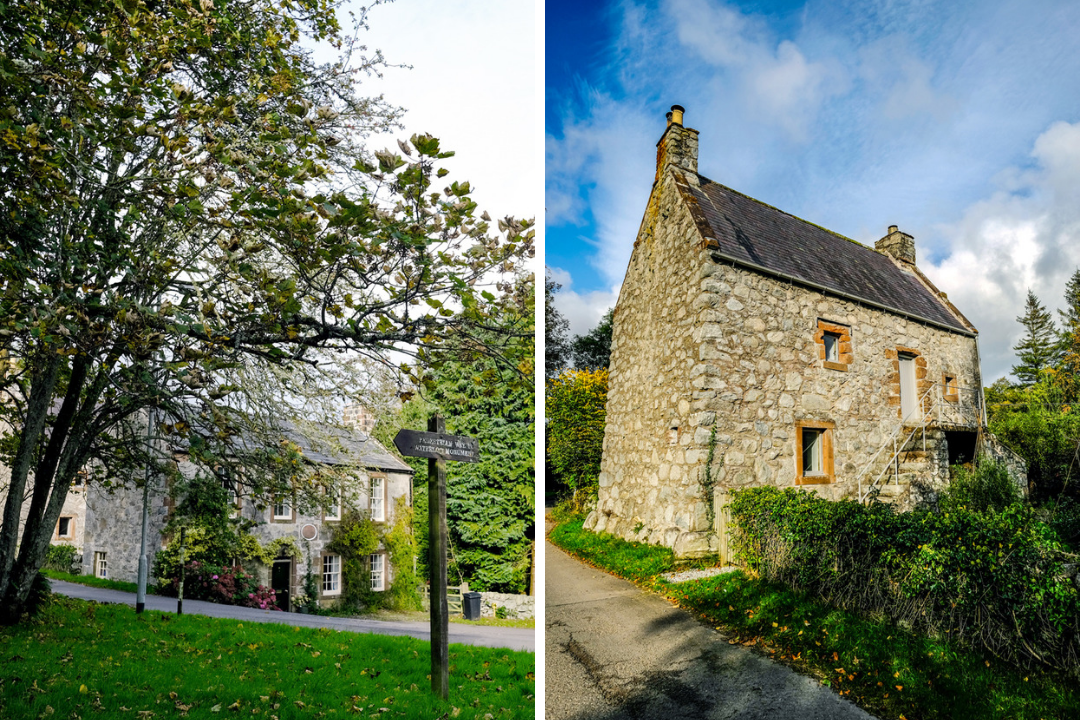
Meeting the Barnies at RSPB Mersehead
Passing under the shadow of the mighty Criffel, one of D&G’s highest hills, we headed under leaden skies to our next stop – RSPB Mersehead – to catch a glimpse of the thousands of barnacle and pink-footed geese arriving for the winter from Svalbard. Talk about noisy – Barnacle Geese don’t half honk! Braving the rain we took the coastal trail to hike the sandy shores of the Solway Firth on a 2.5-mile (4 km) circular walk, with views across to the Lake District before visiting Mersehead’s welcoming visitor centre to warm up with a coffee.
RSPB Mersehead is £3/entry for adults or free for members of the RSPB.
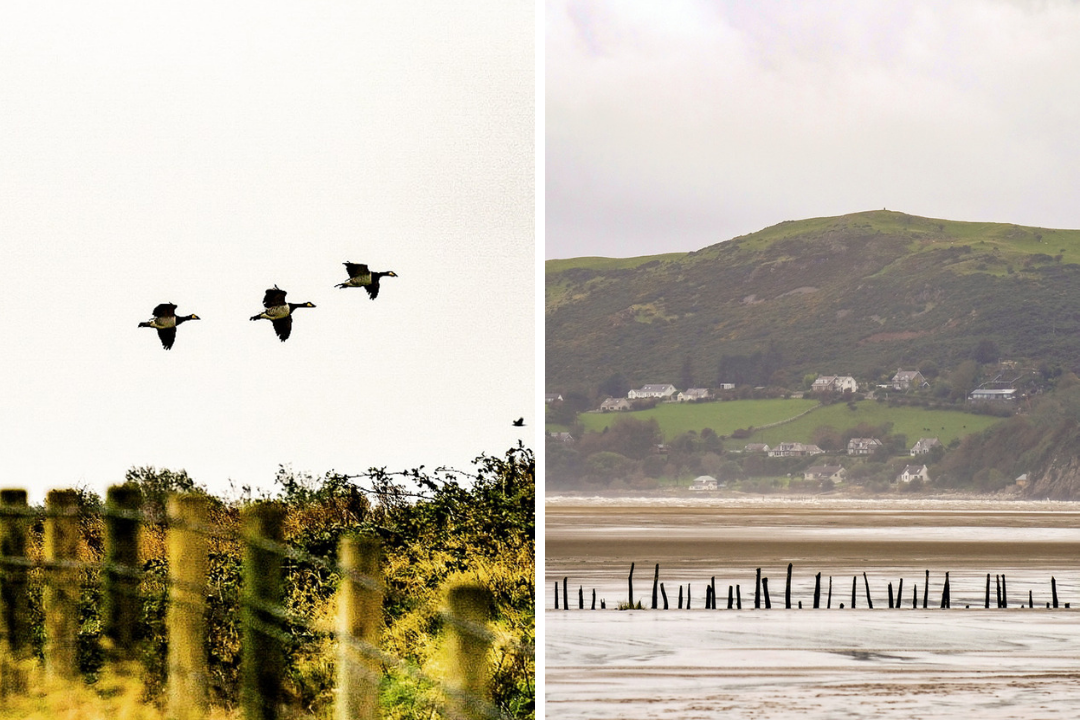
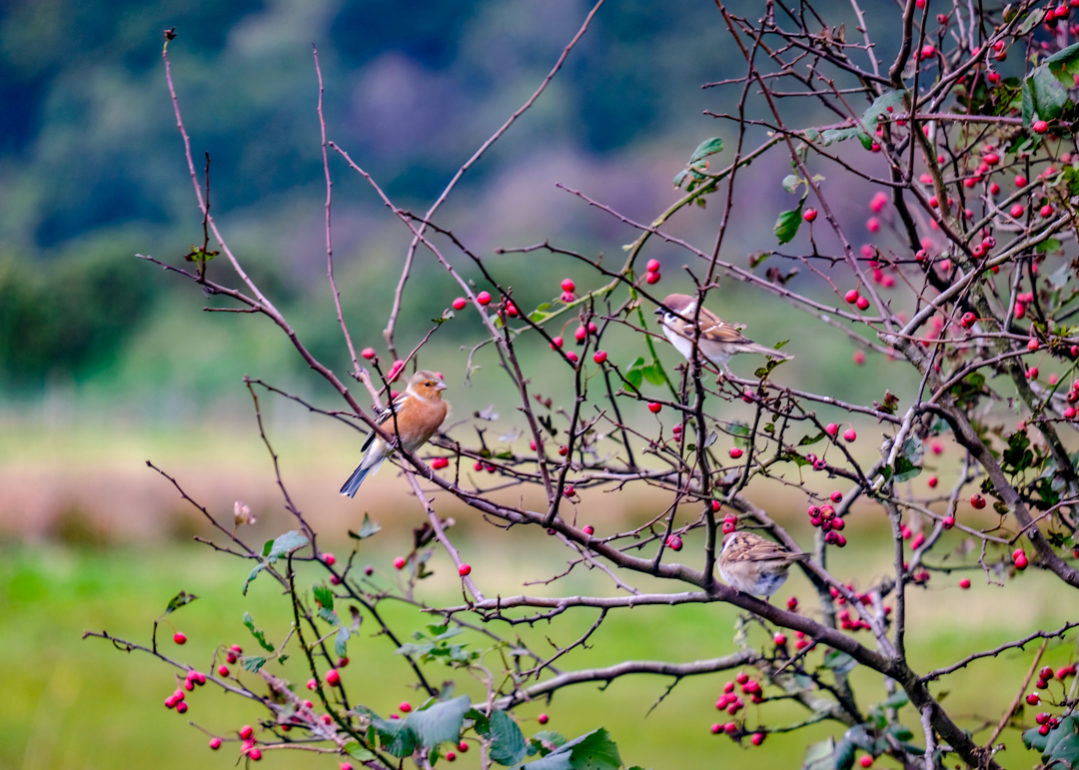
If you have more time – more things to do near Dumfries
- Discover Robert Burns – Scotland’s poet was born in Alloway near Ayr and lived in Dumfries – you can visit a museum dedicated to his life.
- Visit Southerness Lighthouse – this unusual square lighthouse protects ships entering the River Nith and is the second oldest lighthouse in Scotland.
- Head to Sandyhills Beach – one of the best beaches on the Solway Firth, Sandyhills Beach is a broad sweep of gorgeous sand.
- Walk between Rockcliff and Kippford – walk the Jubilee Path between these two lovely coastal villages.
- Threave Castle – perched out on an island, Threave Castle is only accessible by boat.
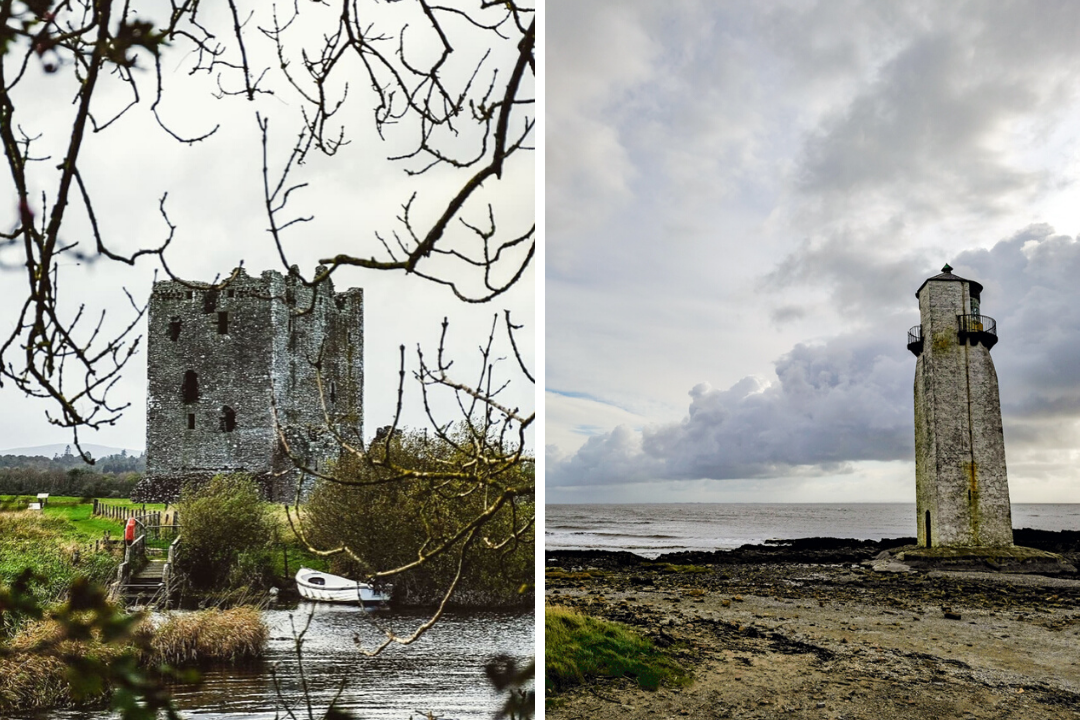
Gatehouse of Fleet, Arty Kirkcudbright & Broughton House
Heading clockwise around the SWC300 route, our next stop was to be Kirkcudbright – one of my favourite wee towns in Scotland. With a thriving artist community along with beautiful cottages and a waterside location, Kirkcudbright (pronounced Kirkcoobree) is a great place to spend an afternoon wandering around – I couldn’t resist another visit.
Artists have long been attracted to D&G due to the incredible light (I honestly moaned at times about too much sun/too much light) and a must-do in Kirkcudbright is a visit to the National Trust for Scotland’s Broughton House home of one of the Glasgow Boys and a stunning Japanese inspired garden – a lovely oasis in the middle of this bustling wee town. Make sure you tour the house – the gallery is quite something!
VISIT / Broughton House is free entry for members of the National Trust for Scotland or £8 for adults.
Nearby, Gatehouse of Fleet is an 18th village named after its tollbooth on the road between Dumfries to Stranraer. Once called the Glasgow of the South, Gatehouse of Fleet was a thriving industrial town with cotton mills and its own brewery. Today the town’s iconic clock tower is the star of many a photograph!
STAY / Gatehouse Luxury Lodges offer family and dog friendly lodges outside of Gatehouse of Fleet.
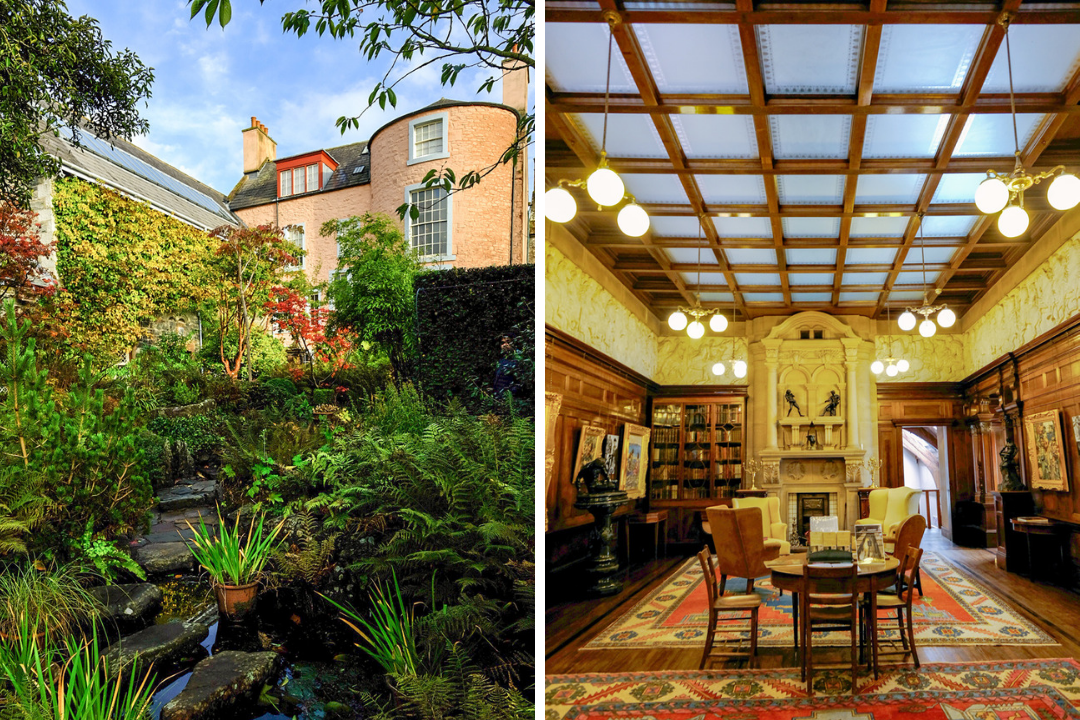
The Machar Peninsula – Wigtown, Whithorn & St Ninian
Heading west, our next stop was the Machar Peninsula, home to Wigtown, Scotland’s first book town, and a thriving hub for literature in Scotland with over a dozen book shops and an annual book festival. We popped into Beltie Books (named after the famous Galloway cows) and ReadingLasses for its books “by and about women” room.
Further south, the village of Whithorn holds the title of the site of the earliest Christian community in Scotland. We visited the remains of Whithorn Priory, home to an early saint, St Ninian to see the first inscribed Christian monument – the Latinus stone – which dates around 450AD.
Further south on the peninsula is the Isle of Whithorn, a small pretty coastal village home to the ruined 13th century Saint Ninian’s Chapel. Pilgrims can walk the 149-mile Whithorn Way from Glasgow. The last section of the Whithorn Way takes you along the cliffs at Burrows Head to the chapel at the Isle of Whithorn. Movie fans will recognise the cliffs as where the iconic final scenes of The Wicker Man were filmed.
I suggest walking the last stage to the rocky beach at St Ninian’s Cave which monks from the monastery at Whithorn used as a place of retreat. You’ll want to stare out at those waves for days.
- EAT / Try The Steam Packet Inn a great real ale pub with locally caught crab on the menu.
- STAY / We stayed at Fordbank House* in Wigtown, a grand B&B once owned by the distiller at Bladnoch just down the road.
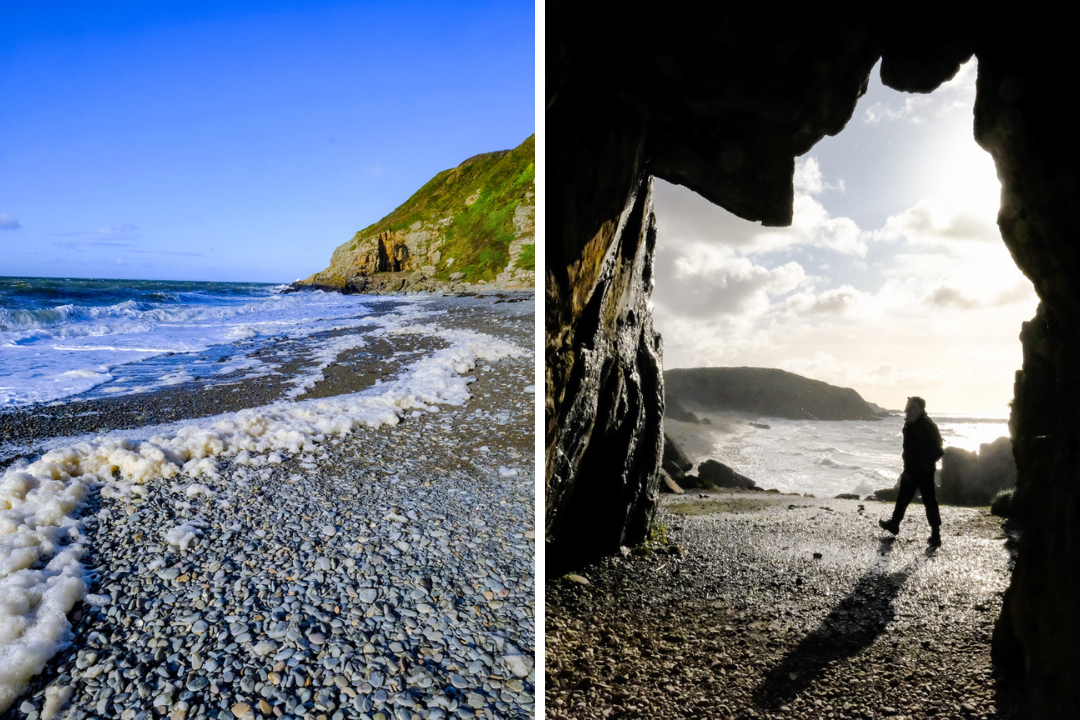
Day / 2 – The Rhinns of Galloway
I love the unique ‘island’ feel you get stepping onto one of Scotland’s Hebridean Islands and arriving on the Rhinns of Galloway feels just like that – without having to leave the mainland.
A 25-mile peninsula, the rugged Rhinns stretch from Corsewall Lighthouse in the north to the Mull of Galloway, Scotland’s most southerly point. Sparsely populated – the peninsula’s main towns are Stranraer on Loch Ryan, home to the ferries to Belfast and Larne, and the pretty harbour town of Portpatrick, in between the landscape is filled with hundreds of coos.
Thanks to the North Atlantic drift, the Rhinns of Galloway has its own special microclimate – the gulf stream gives the Rhinns the mildest climate in Scotland – even warming up the peninsula in winter allowing for tropical plants to grow with ease.
STAY / We stayed for the night at Corsewall Lighthouse* – a real live working lighthouse, complete with quirky decor and a warm welcome.
EAT / Lovely lunches are available from the friendly Potting Shed Bistro
VISIT / Logan Botanic Garden is open from 1 March to 15 November and is £7 for adults.
Logan Botanic Garden
The best place to see The Rhinns microclimate in action is at Logan Botanic Gardens. Celebrating 50 years of being part of Edinburgh Royal Botanic Garden, Logan has an almost sub-tropical climate and allows for a quite staggering collection of plants from Australia, New Zealand, South and Central America and Southern Africa, including ferns, palm trees, and a stunning walled garden complete with its own castle… It’s a beautiful, quiet space to simply just wander around.
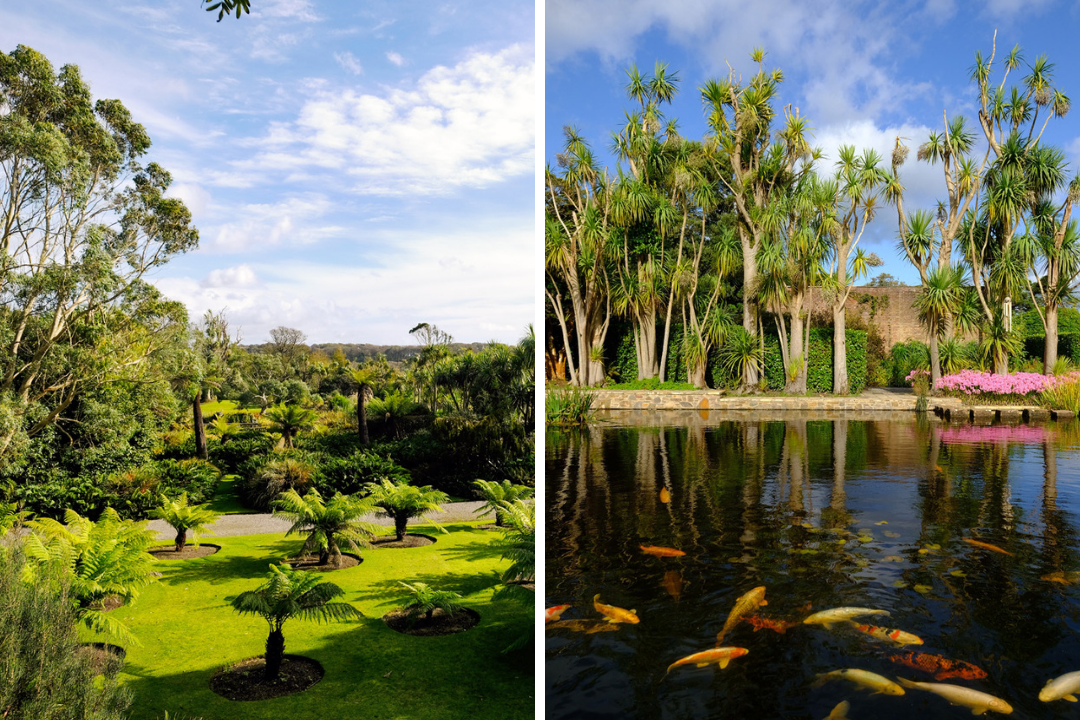
Scotland’s most southerly point
The most southerly tip of Scotland sits at the Mull of Galloway, home to a Stevenson lighthouse perched on top of a 260ft cliff surrounded by wheeling seabirds and views to England, Scotland, the Isle of Man and even Northern Ireland. If you are fit enough climb the 115 steps to the top of the lighthouse – the climb comes with a health warning! Surrounding the lighthouse is an RSPB reserve with a lovely wee visitor centre complete with cameras to watch the waves below – keep an eye open for dolphins, porpoises and even whales!
The view from the Gallie Craig Coffee House over the South Rhinns Peninsula and cliffs is quite simply stunning.
Portpatrick
The main tourist town on the Rhinns, Portpatrick is a cluster of cottages sitting around a pretty bay and harbour. There are plenty of pubs and a gallery to explore, hotels & B&Bs. The harbour was once home to the ferries to Ireland (they now go from Cairnryan further north) and the town is now the start of the Southern Upland Way which will take you 212 miles to Cocksburnpath on the east coast.
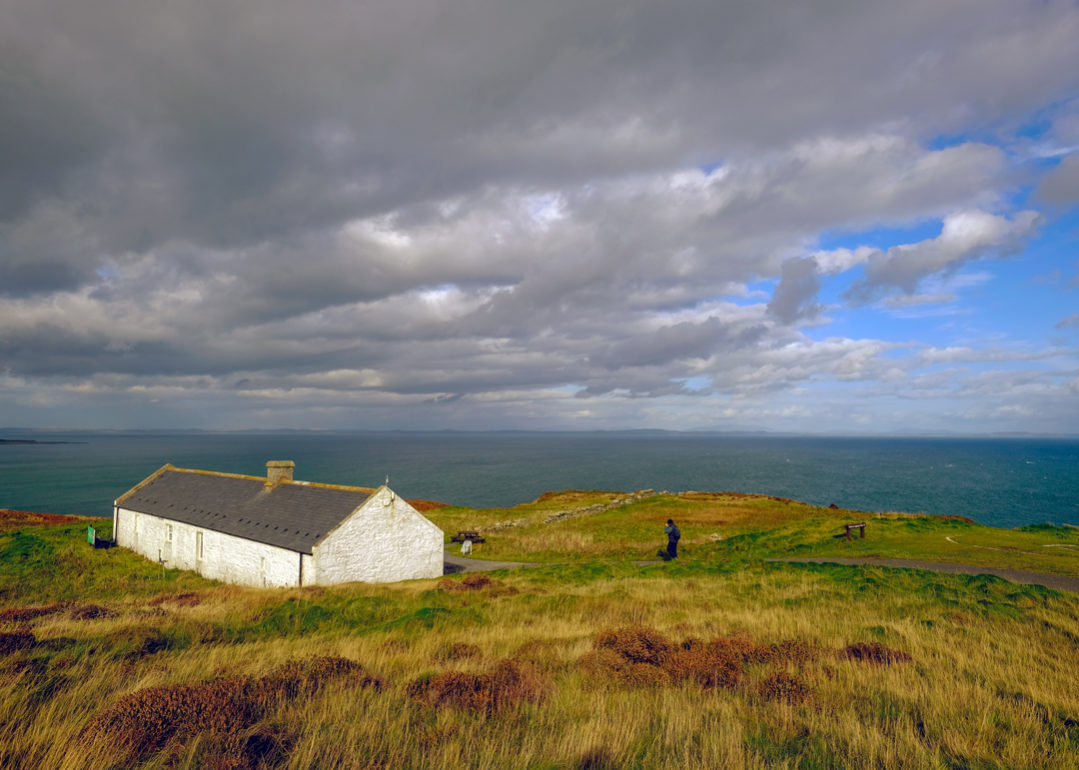
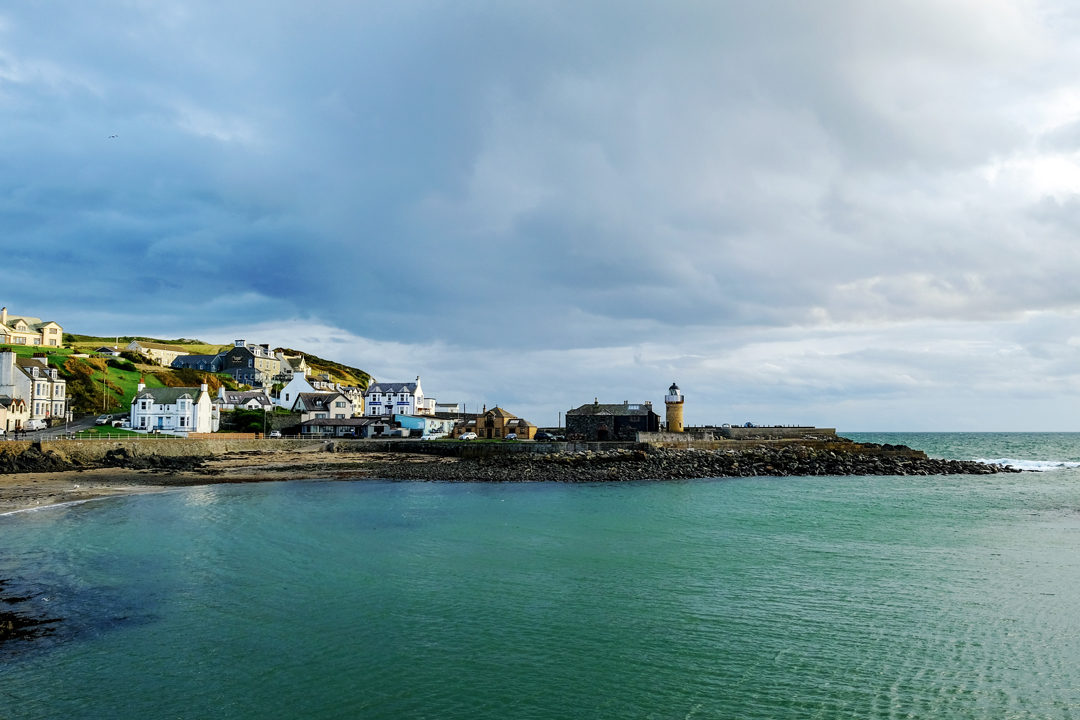
Day / 3 – The Ayrshire Coast
Ayrshire is a land of vast vistas, sweeping coves, granite island and incredible views. Much of the SWC300 takes you on the A77 from Loch Ryan to Girvan – with stunning views across to the volcanic Ailsa Craig and beyond to the Isle of Arran and Kintyre. Ayrshire is most famous for being the birthplace of Rabbie Burns – and you can visit his wee home in Alloway outside of Ayr, however, we were on the hunt for bigger buildings altogether – the majestic Culzean Castle and Dumfries House.
Read more: things to do in Ayrshire
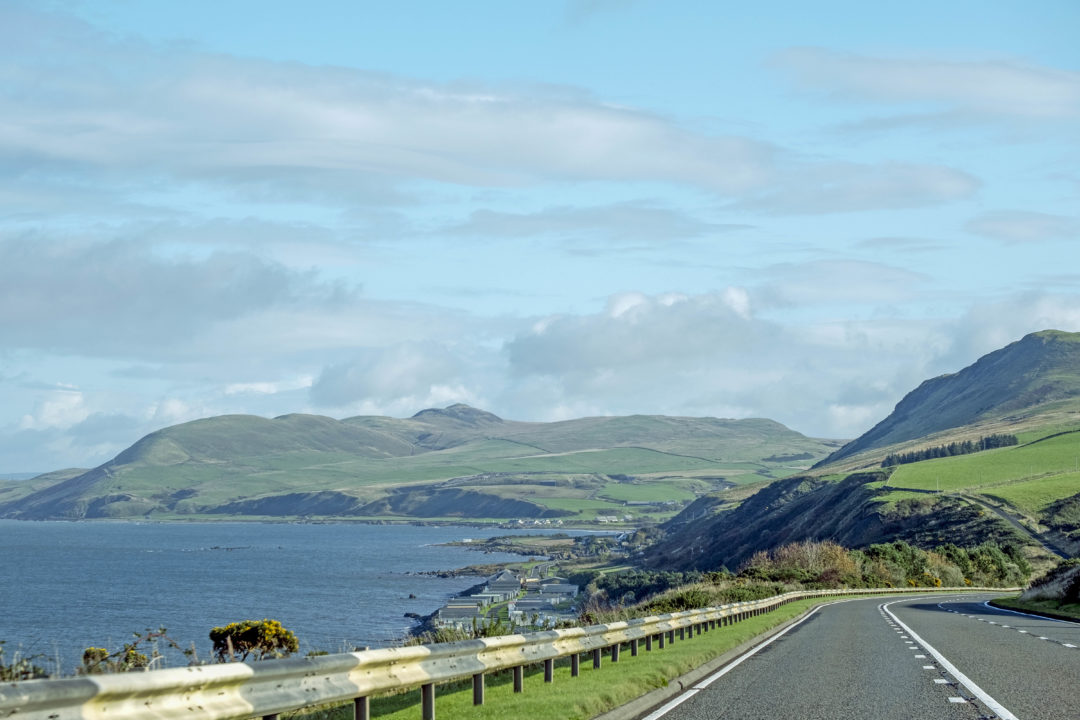
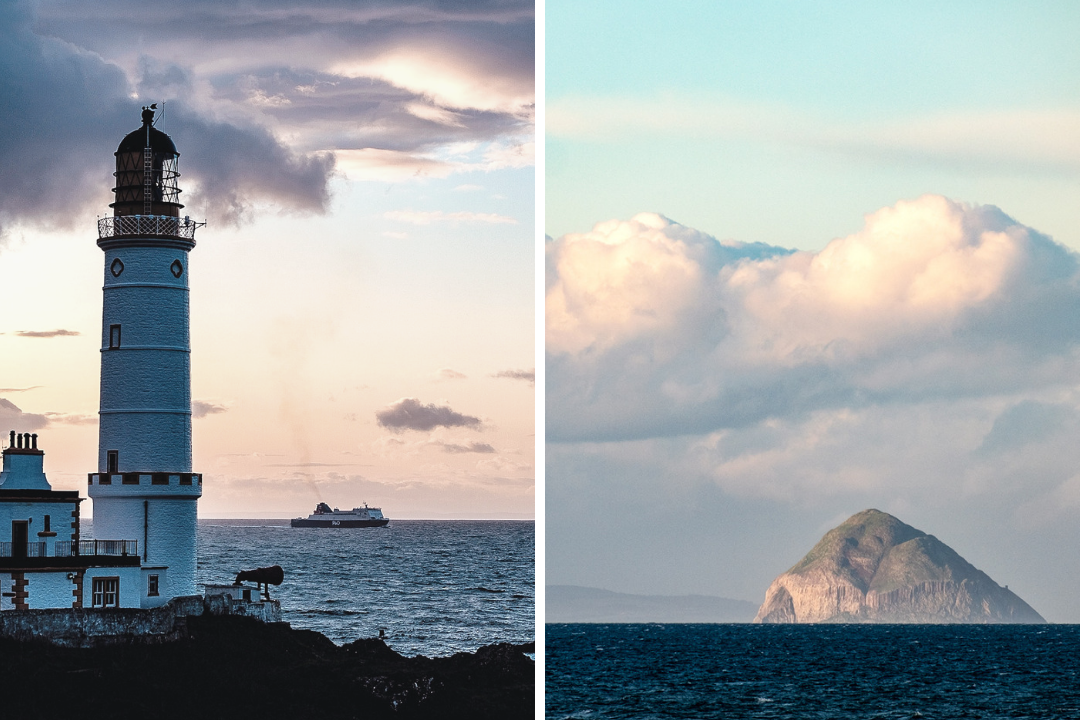
Culzean Castle
Perched on a clifftop above crashing waves, Culzean Castle is quite simply spectacular. Once the home of the chief of Clan Kennedy and designed by famous Scottish architect, Robert Adam, the castle is now managed by the National Trust for Scotland. The castle is surrounded by a 260-hectare country park including its own beaches, parkland, woods and play areas including Adventure Cove and the Wild Woodland – perfect for kids to run around in.
- VISIT / Culzean Castle is £17 for adults (free for NTS members). The gardens are free entry.
- Did you know – Culzean Castle is used as the castle of Lord Summerisle in the Wickerman?
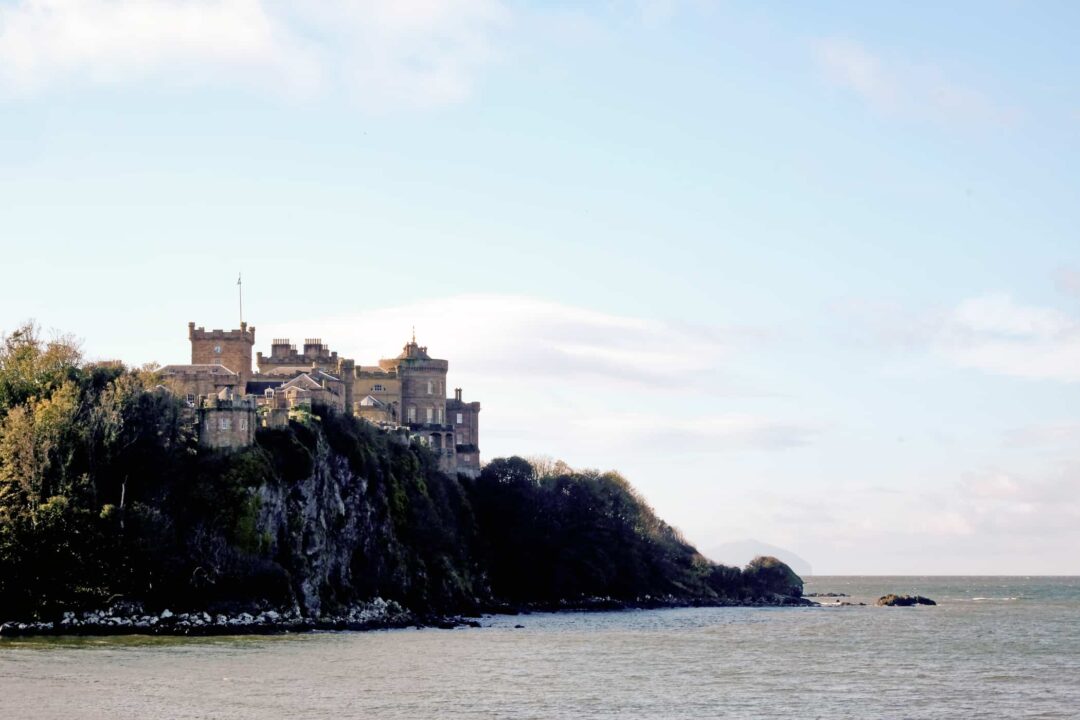
Dumfries House
Another Robert Adam gem, Dumfries House was saved for the nation by Prince Charles on behalf of his’s Princes Foundation in 2007 for the sum of £45million. Built for William Dalrymple, 5th Earl of Dumfries, the house is rather special and contains much of its original furniture – including pieces specially commissioned from Thomas Chippendale.
The grounds of the house’s 2,000-acre estate are especially beautiful, and come complete with a Chinese Bridge and arboretum, walled garden and even a maze for kids to run around in. The restoration of the house and garden has been completed in stunning fashion and gives an insight into a true 18th-century mansion home.
VISIT / The gardens at Dumfries House are free entry, tours of the house start at £7.
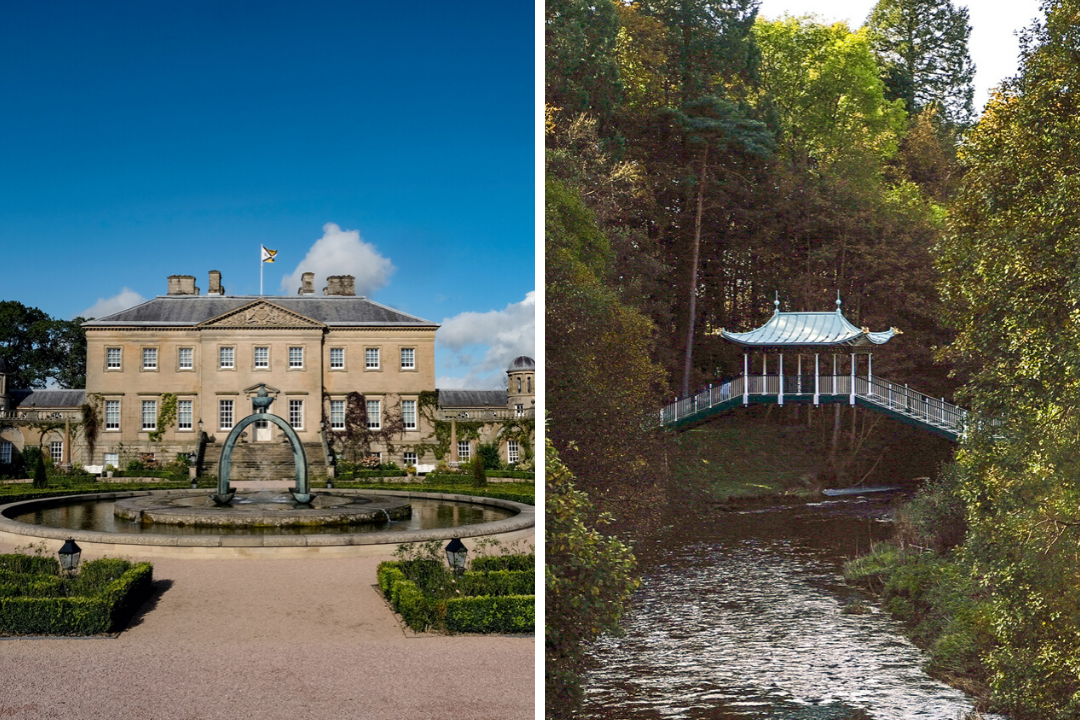
Day / 4 – The Southern Uplands
Did you know that you don’t have to hoof it to the Scottish Highlands to visit the mountains? The Southern Uplands of Scotland might not have any Munros, but the Merrick and its neighbours are great hills for a stroll on a good day – giving views over the Galloway Forest Park all the way to the Solway Firth. If you don’t have time to pop up a mountain, here’s what to do on the last day of the South West Coastal 300.
- STAY / We explored the Southern Uplands from the comfort of Blackaddie Country House Hotel*, which offered delicious fine dining, river views and a very warm welcome.
Galloway Forest & Dark Sky Park
Galloway Forest Park, the largest forest park in the whole of the UK is one of my favourite places to walk in Scotland. By day, take a hike around beautiful Loch Trool to find Bruce’s Stone under the towering mountains, or the short stroll up the gorgeous Ness Glen near Loch Doon. By night, the forest has been named the first Dark Sky Park in the UK and is home to Galloway Forest Dark Sky Park and the Scottish Dark Sky Observatory. The night skies must be seen to be believed!
The grounds of the house’s 2,000-acre estate are especially beautiful, and come complete with a Chinese Bridge and arboretum, walled garden and even a maze for kids to run around in. The restoration of the house and garden has been completed in stunning fashion and gives an insight into a true 18th-century mansion home.
Crawick Multiverse
If you love the ‘heavens’ then you will also love Crawick Multiverse, a 55 hectare, incredible land art installation hidden in Upper Nithsdale. Designed by the late Charles Jencks, Crawick Multiverse is a series of landforms representing the spiral galaxies of Andromeda and the Milky Way, our universe and its place within the cosmos, and the Belvedere, a lookout offering a 360º view of the Dumfriesshire countryside. It is a special place.
- VISIT / The Multiverse is open from May to October and is £5 per adult. Voluntary donations are welcome.
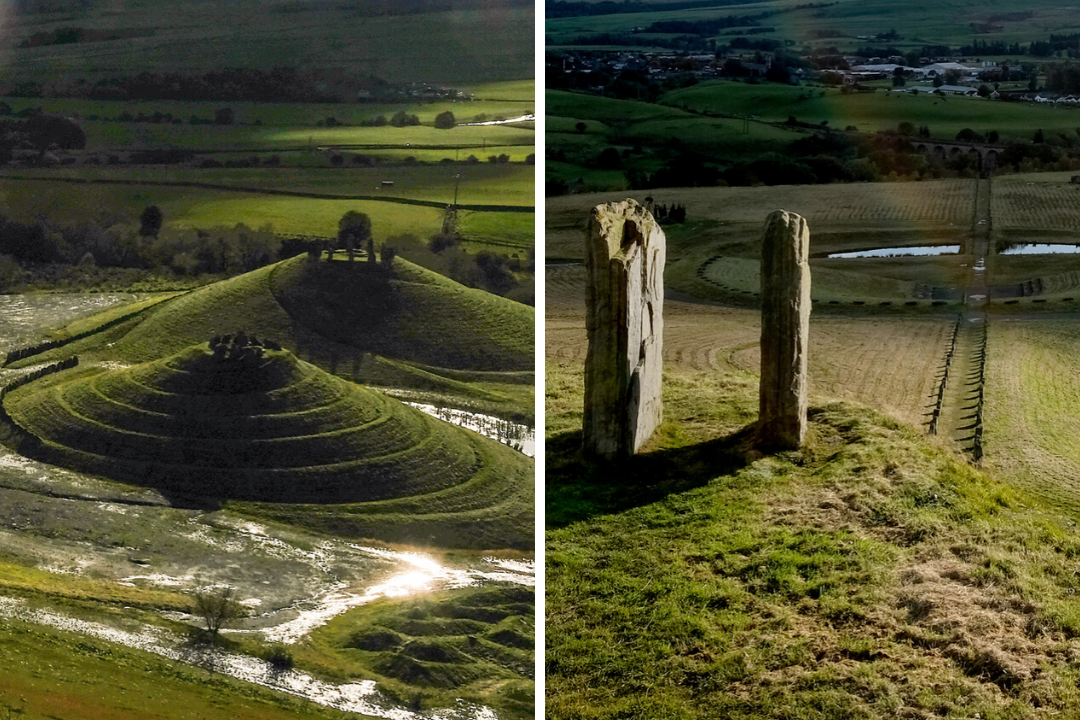
Wanlockhead – Scotland’s highest village
Did you know that Scotland’s highest village is actually in South West Scotland? Sitting at 410 m (1,350 ft) the village is accessed by the spectacular Mennock Path which winds its way up into the Lowther Hills. In the village is a Museum of Lead Mining, which sheds fascinating insight into life in Wanlockhead, including the second oldest subscription library in the country and a section of accessible mine leading deep into the hillside. A tour is highly recommended.
- VISIT / the museum is open 1st April until 30th September and tours run daily at 11:25, 12:25, 13:55, 14:55, 15:55 (mine only).
The Lowther hills were home to both lead and gold, and the village was founded in 1860, by the Duke of Buccleuch who built a lead smelting plant. The village’s gold was some of Scotland’s purest, and the Scottish crown was made out of gold mined in Wanlockhead. There might not be gold left in the hills, but the SWC300’s is chock full of incredible hidden gems!
Time to head off on your own SWC300 adventure.
Love, from Scotland x
Like this? More: epic Scottish Road Trips
You might also like: a 7 day epic drive around South Scotland
